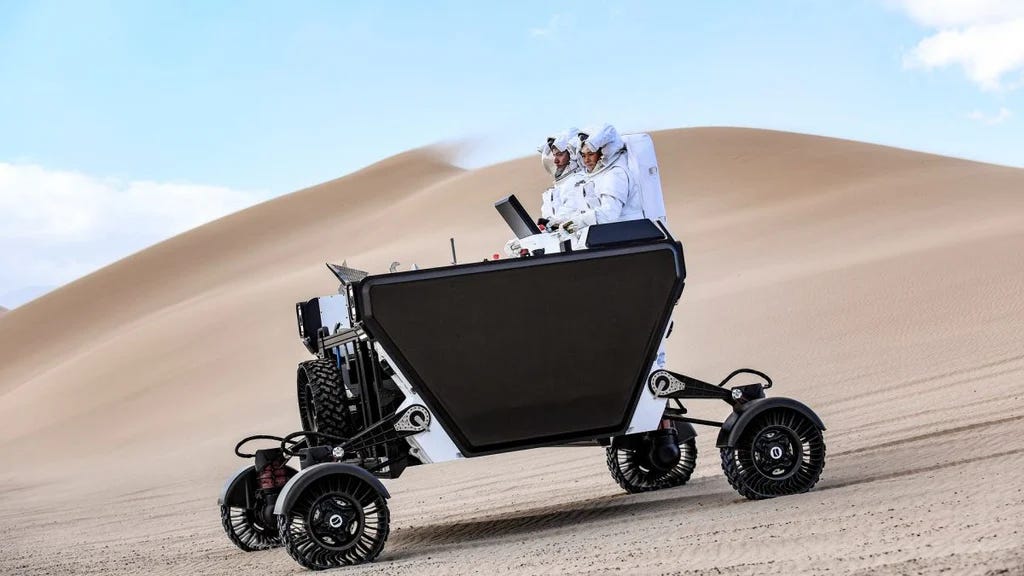Currently SpaceX are relatively tight-lipped about their Crew Starship internal layout, ahead of the big reveal. However, information leaks out, such as the ship’s function and operating details that allows us a reasonable idea of the deck layout and systems. For example, the Human Landing System (HLS) Starship, built for NASA’s Artemis moon program, is effectively a prototype for SpaceX’s Crew Starship intended for Mars. Hence they will likely employ a similar deck layout, because they serve a similar function i.e. as a crew transport/lander vehicle. Realistically HLS will only transport astronauts between a Near-Rectilinear Halo Orbit (NRHO) and the moon’s surface, which promises to be far less demanding than a multi-month flight to Mars followed by atmospheric Entry, Descent and Landing (EDL). However, moon landings should provide plenty of opportunity for SpaceX to improve the design based on practical experience, although the basic deck layout is unlikely to change due to practical reasons.
HLS and Crew Starship will both be used as foundation habitats for their respective worlds and deploy similar amounts of equipment. In addition they will rely on cargo Starships to deliver most of the bulkier items required to build and maintain an outpost, allowing the mission duration to extend indefinitely on both worlds. This frees designers to focus on immediate crew needs, narrowing the possibilities further for a practical Crew Starship layout.
By the time SpaceX are ready to transport people to Mars they should have advanced to their Version 3 Starship design. This is a substantially larger vehicle than previous versions, with ~1,200 m³ of pressurized volume; roughly split between 6 decks of 9m diameter plus another 2 and a half decks in the nose cone. Interestingly a software developer AMA revealed some of the deck functions for a crew vessel.
“The [Starship] technology will likely be similar to Dragon, but the design, usage, and goals of the onboard Starship UI [User Interface] are notably different from Dragon. The Dragon Crew Displays are three touchscreens in a small vehicle with a singular destination, supporting a small group of passengers and their cargo. Starship will fly missions to locations worldwide, the Moon, Mars, and beyond. The Starship UI must be usable on devices and touchscreens of all sizes around the vehicle (common areas, living quarters, loading areas, and the bridge) and must support users with completely different jobs and skillsets.” ~ Asher Dunn – Lead Starship Software developer
According to numerous HLS graphics, the ‘loading area’ is located immediately above the main propellant tanks, and the lowest crew deck on the vehicle, so let’s start there...
Deck 1: Airlocks & Garage
“There’s room in Starship for multiple crew decks, we only really need one for the Artemis 3 mission. Below that crew deck there are 2 airlocks that are each the pressurized volume of a Dragon capsule [37 m³]… Those airlocks are inside a very large garage [9m diameter deck]… The idea is we are starting with the capability we need for Artemis 3 and then we will work towards being able to fly more people for longer durations – adding the ability to land on Mars.” ~ Nicholas Cummings SpaceX Director for Mars program
No doubt Crew Starship will carry some equipment that’s essential for crew operations, rather than rely on distant Cargo Starships for these items. Hence anything bulky will probably be carried on the ‘large garage’ deck, so they can be easily deployed to the surface via the deck’s twin airlocks. These airlocks are unusually large (more than 3m wide), which makes them ideal for moving heavy equipment onto the external elevator and down to the surface.
For example: once Crew Starship lands on Mars, the power generated by the ship’s conformal solar array will roughly halve due to the day-night cycle. Hence they will need to deploy additional solar panels to supplement the ship’s power, similar to the system used on Cargo Starships.
“The logical thing to do is basically outfit one of the [Cargo] ships as a propellant plant itself, and just land it on the planet as a working propellant plant. And then you just need little miner droids to go dig up ice and bring it back and unfurl the solar panels.” ~ Elon Musk/Popular Mechanics
These deployable solar panels will probably be transported inside of the vehicle, to shield them from the ferocious conditions experienced during EDL. Ideally these large panels would be carried on wheeled rovers, allowing them to be easily moved to a suitable position for deployment. This should ensure these solar arrays are generating power relatively quickly after landing, an important consideration as Starship will likely be operating at an energy deficit and surface activities will demand even more power.
Once these solar arrays and rovers have been deployed to the surface, that should free considerable space on the Garage Deck, allowing it to be used as a maintenance and repair workshop. The EVA suits designed by SpaceX employ non-rigid bearing joints and advanced materials, making them extremely flexible, hence easy to doff and don anywhere onboard the vehicle (see Deck 3: Crew Quarters). Access to all higher decks is via a central shaft, roughly 1m in diameter, likely ascended by ladder.
Keep reading with a 7-day free trial
Subscribe to Chris’s Substack to keep reading this post and get 7 days of free access to the full post archives.





